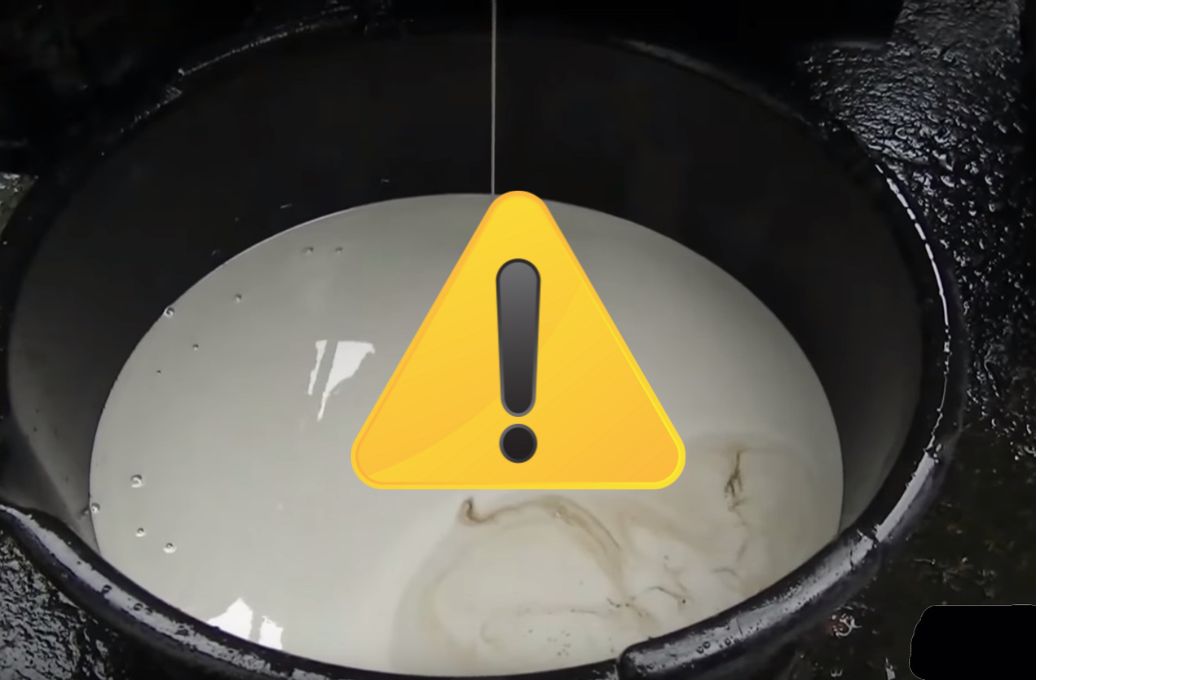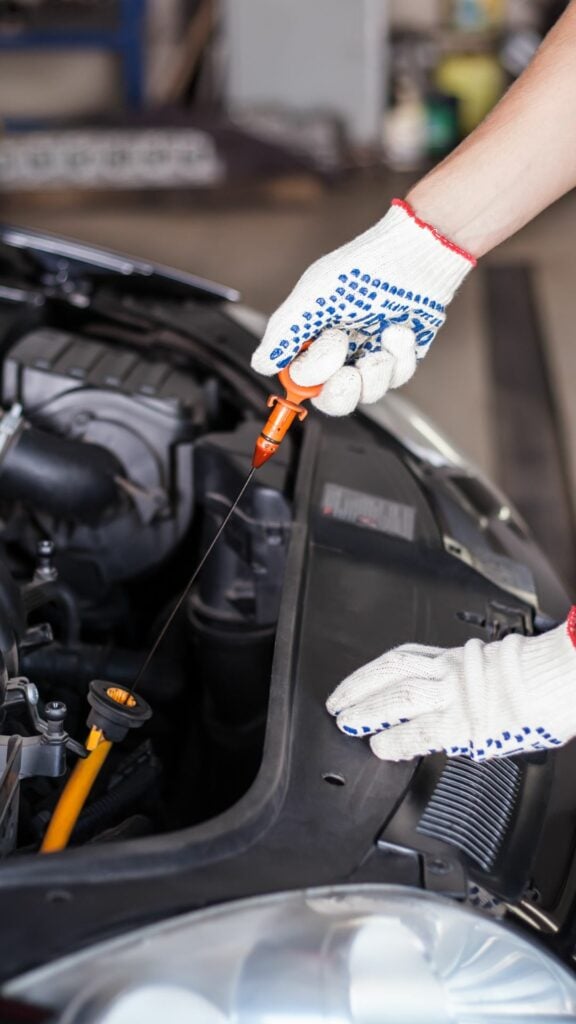WATER IN ENGINE OIL SYMPTOMS: DETECTING AND ADDRESSING THE CAUSES
Discovering water in your engine oil? Identifying the telltale signs can be the key to safeguarding your vehicle’s health. This guide delves into the distinct symptoms of water contamination in engine oil, ensuring you’re equipped to act promptly. Let’s get into these vital indicators. Keep reading!
Essential Signs of Water in Engine Oil
When water infiltrates engine oil, several symptoms arise. The oil may appear milky or frothy, indicating coolant mixing. Additionally, you might notice white smoke from the exhaust, poor engine performance, or overheating. It’s vital to address this promptly, as water in oil can damage engine components and reduce lubrication efficacy.

Identifying Water in Oil Through Dipstick
One way to determine if there’s water in your engine oil is by using the dipstick. Here are some signs to look for when checking your dipstick:
- Milky appearance: Water mixed with oil looks cloudy and milky.
- Brown residue: If you notice a brownish residue just above the oil level, it could be an indicator of water in the oil.
- Foamy oil: The presence of foam on the dipstick is another sign of water in the oil.

To confirm if there’s water in your engine oil, wipe the dipstick clean and insert it back into the engine.
Remove it again and check for any of the signs mentioned above. In case you still suspect water in your oil, consult a professional for a thorough examination.
Grey Color of Engine Oil
The presence of water in engine oil can also result in a grey or milky color. This happens because the water causes the oil and additives to separate, creating a distinct color change.
If you notice a grey color on the oil cap or in the oil itself, it could be a sign of water contamination.
Here are some factors that could cause grey engine oil:
- A leaking coolant system: Coolant could mix with the engine oil due to leaks or faulty connections.
- Condensation: Short trips that don’t allow the engine to reach optimal temperature may cause condensation inside the engine, which could mix with the oil.
- Head gasket failure: A damaged head gasket can allow coolant to mix with the engine oil.
It’s crucial to keep an eye out for signs of water in your engine oil.
Monitor your engine’s condition with regular oil checks using the dipstick and look for any unusual changes in the oil’s color, consistency, or appearance.
If you suspect any of these symptoms, consult a professional to address the issue promptly and prevent potential engine damage.
Possible Consequences of Water in Engine Oil
Water in engine oil can cause severe problems for your vehicle. When water mixes with the oil, it affects the oil’s lubricating properties, leading to increased friction and heat within the engine.
This can result in damage to various engine components and potentially lead to costly repairs or even engine failure.

Effects of Overfilling With Engine Oil
Overfilling engine oil can also lead to a range of issues in your vehicle. Some of the potential consequences include:
- Increased pressure: Excess oil can create higher pressure within the engine, leading to increased wear on seals and gaskets, causing oil leaks.
- Foaming of the oil: Too much oil can lead to foaming, resulting in poor lubrication, increased friction, and heat within the engine.
- Damage to the catalytic converter: Excess oil can end up in the exhaust system, potentially damaging the catalytic converter.
To prevent these issues, be sure to check and maintain the correct engine oil level in your vehicle. Consult your vehicle’s owner manual for the specific recommended oil level.
Though it might be tempting to continue driving with water in the oil, addressing the issue as soon as possible is crucial to prevent further damage.
While driving a short distance with water in the oil may be possible, doing so for an extended period will likely cause significant harm to your engine.
If you suspect that your engine is hydrolocked, i.e., the engine cannot turn due to water inside, do not attempt to start the vehicle.
Instead, have a mechanic evaluate the situation to discuss a potential fix, which may include draining the oil and removing the spark plugs to clear the water from the engine.
Remember, maintaining the proper engine oil level and addressing any potential issues promptly will help ensure the longevity and performance of your vehicle.
Make it a habit to regularly check your engine oil levels, and take action to resolve any abnormal readings immediately.

Water in Engine Oil: Causes and Solutions
Having water in your engine oil is a common issue, and it can lead to several problems, including engine failure.
Understanding the causes and solutions for water in your engine oil can help prevent damage and maintain the lifespan of your vehicle.
Oil and Coolant Cross-Contamination: An Exception
In some cases, water in the engine oil is not due to external factors or a damaged engine component. Instead, it could be the result of oil and coolant cross-contamination.
This typically occurs when there is a crack in the engine block, a damaged head gasket, or a damaged oil cooler.
When coolant leaks into the combustion chamber, it can mix with the engine oil, causing a milky or creamy-colored substance.
This is a clear sign of coolant contamination in your engine oil. Additionally, you may notice oil in the radiator but no water in the oil, indicating that the coolant and oil are mixing somewhere in your vehicle’s system.
To fix this issue, you will need to:
- Identify the source of the coolant leak: Check for cracks in the engine block, damaged head gaskets, or oil coolers.
- Repair or replace the damaged components: This may require professional assistance from a mechanic or automotive technician.
- Flush and replace the engine oil and coolant: After the repair, it’s essential to change both the engine oil and coolant to ensure that all contaminants are removed from your vehicle’s system.
Apart from coolant and oil cross-contamination, other common causes of water in the engine oil include:
- Overheating: When the engine runs too hot, the water in your cooling system can vaporize and enter your engine oil.
- Leaking gaskets or seals: Damaged seals or gaskets can allow fluids, such as coolant or water, to enter the oil system.
To address these issues, perform regular maintenance checks on your vehicle, including monitoring engine temperatures, inspecting gaskets and seals, and replacing worn-out parts as needed.
Doing so prevents water from entering your engine oil and keeps your vehicle running smoothly.
Specific Vehicle Oil Capacity

Oil Change Locations and Costs
When changing your vehicle’s oil, you must consider the specific oil capacity required for your engine.
Vehicle Oil Change Chart
| Vehicle | Motor Size | Oil Quantity |
|---|---|---|
| Honda Civic | 2.0L | 3.7 quarts |
| Toyota Camry | 2.5L | 4.5 quarts |
| Ford F-150 | 3.5L | 6 quarts |
| Chevrolet Silverado | 5.3L | 6 quarts |
| Honda CR-V | 1.5L | 4.4 quarts |
| Toyota RAV4 | 2.5L | 4.4 quarts |
| Nissan Altima | 2.5L | 4.9 quarts |
| Jeep Wrangler | 3.6L | 6 quarts |
| Subaru Outback | 2.5L | 5.1 quarts |
| Ford Mustang | 5.0L | 8.5 quarts |
(Source: cars-care.net, carengineoilcapacity.com, Ford)
When it comes to oil change locations, you have several options. Large chain stores like Walmart offer oil change services, including diesel oil changes.
Costs vary depending on your vehicle, oil type, and location, but a general price range for a standard oil change is between $20 and $70.
If you are experiencing issues with your vehicle’s oil system, such as needing an oil pump replacement, be prepared for higher costs.
Oil pump replacement costs typically range from $300 to $1,000, depending on your vehicle’s make and model, labor rates, and parts pricing.
A suction pump for oil can be a useful tool during an oil change, allowing you to remove old oil from your vehicle easily.
Suction pumps are available at various prices, starting from around $20 for manual versions to $100 or more for electric models.
When considering your options for oil changes, keep in mind the specific oil capacity for your vehicle and the costs and locations of the services you require.
Considering these factors, you’ll be better prepared to maintain your engine’s performance and longevity.
Share Your Insights With US
Did we forget something, get something right (or wrong)? We’d love to hear your insights! Share your automotive experiences based on our article in the comments below. Your input enriches our community’s knowledge. Thanks in advance for sharing!
Related Reading
- What Happens When Water Mixes With Oil In A Car Engine?
- Does Car Engine Oil Evaporate?
- When Your Jeep Says Hot Oil, What Does It Mean?
- What Causes A Blown Head Gasket?
- What To Do If Your Jeep Wrangler Is Burning Oil
- Auto Repair: Oil Change and Oil Filter Changes
- Do Subaru Engines Burn Oil?
- Why Is My Kia Soul Burning Oil? 4 Tips To Keep Driving
- 4 Common Dodge 4.7 Engine Problems
Frequently Asked Questions
How can I tell if there’s water in my engine oil?
To check for water in your engine oil, you can:
- Inspect the oil cap and dipstick for a milky appearance.
- Check for coolant leaks.
- Observe any foamy oil on the oil cap or dipstick.
- Notice any unusual smell from the oil or exhaust.
What are the common causes of water in engine oil?
Some common causes of water in engine oil include:
- Leaking head gasket.
- Cracked engine block or cylinder head.
- Damaged oil cooler.
- Condensation build-up in the engine.

What are the potential consequences of driving with water in the oil?
Driving with water in your engine oil can lead to:
- Reduced lubrication, increasing friction.
- Overheating and engine misfires.
- Engine damage due to increased wear and corrosion.
- Decreased performance and efficiency.
Are there any specific symptoms for diesel engines?
In diesel engines, symptoms of water in engine oil can be:
- Increased exhaust smoke.
- Poor idling or rough running.
- Increased fuel consumption.
- Loss of power and higher engine noise.
What does milky engine oil indicate?
Milky engine oil indicates that water has mixed with the oil, forming an emulsion. This condition reduces the lubricating properties of the oil and can lead to engine damage due to increased friction and heat.
What is the best method for testing water content in engine oil?
The most effective method for testing water content in engine oil is to:
- Obtain a sample of the oil from the engine using a suction pump or by draining a small amount of oil.
- Use a laboratory oil testing kit or send the sample to a professional oil analysis laboratory.
- The laboratory will test the oil and provide a detailed report on water content and other contaminants.
